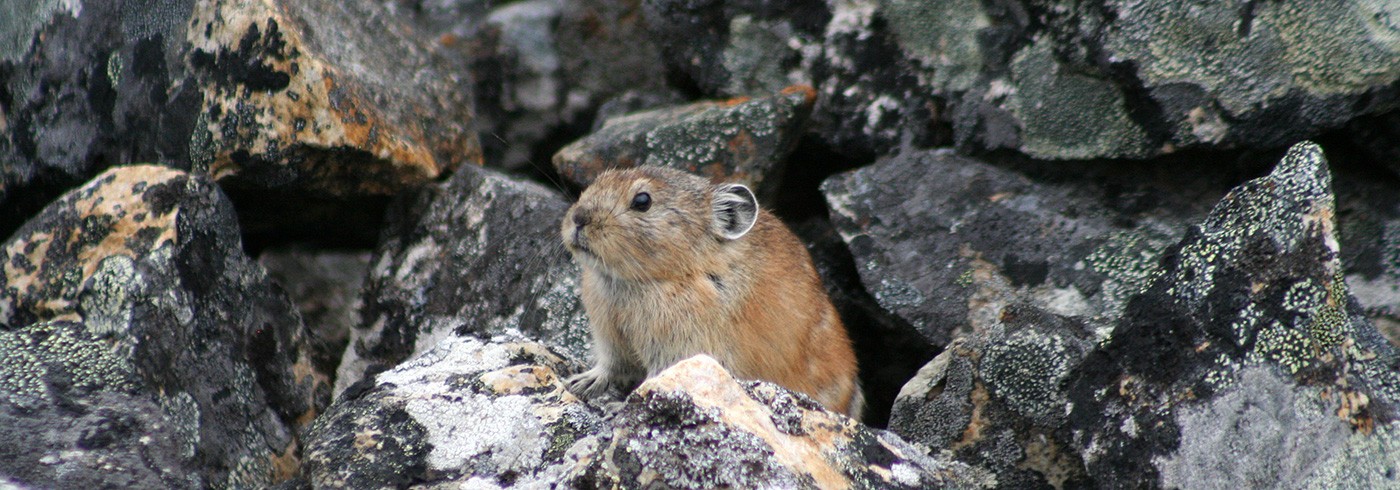Expedition summary: Beringia - geological and ecological history
11 July 2005 - 15 October 2005The way in which the Earth’s continents have moved across the face of the planet – tectonic evolution – has occasionally brought about drastic changes for all life forms. We need to understand tectonic processes in order to reconstruct our planet’s environmental history, a prerequisite to make predictions of future changes in the environment. The physical history of the Arctic region is important from a geological perspective, but also for understanding climate patterns, the evolution of Arctic life forms, current plant and animal distributions and the flow of nutrients and erosion rates in the Arctic environment. On a geological time scale the Arctic Ocean of today has previously been a very different place. Fifty-five million year old samples from the bottom of the Arctic Ocean have revealed evidence of subtropical conditions with surface water temperatures of 20°C. The ocean itself started to form around 130 million years ago, when the continental plates broke up and started to drift away from each other. The aim of this theme during the Beringia 2005 expedition was to unravel geological and ecological history on many scales, from the mechanisms of large scale continental redistribution to local changes in climate and species’ distributions during the last few thousand years.
The theme brought together scientists working with field methods ranging from taking sediment cores at 500–3 000 m water depth and sonar mapping of the Arctic Ocean floor to collecting rocks and plants by hand in Chukotka and digging up sediment profiles from peatlands in Kamchatka. The samples will be analysed with a variety of advanced laboratory techniques to establish sedimentation rates, ages of rock and sediment samples, geochemistry, ratios of oxygen isotopes, species composition of ancient pollen and plankton, etc. Preliminary results indicate an end to the last ice age in Kamchatka around 10,000 years ago, i.e. similar to the time it ended in northern Scandinavia. The exploration of the Arctic Ocean sea floor revealed extensive and deep glaciogenic features never previously mapped, showed pockmark fields and for the first time discovered up to 30 meter high mud waves indicating bottom currents in the deep Arctic Ocean. The rocks collected in Chukotka will be an important contribution to solving the circum-Arctic puzzle of how and when the continents opened up to form the Arctic Ocean. An important question during the joint work of icebreakers Oden and Healy near the North Pole was whether there is a “gap” in the Lomonosov Ridge, the huge submarine mountain chain which divides the Arctic Ocean. This is of great importance for deep water exchange between the Makarov and Amundsen Basins. A deep passage through the ridge was in fact demonstrated, but it turned out to be 500 m shallower than previously thought. The bathymetric maps of the Arctic Ocean must therefore now be redrawn.
The expedition also explored how evolution and distribution of species have been affected by ice ages and other climate changes in the past. Using modern genetic techniques even small fragments of tissue can be used to map an individual’s evolutionary background. The setup of the Beringia 2005 expedition was well suited for projects which sampled plants and animals in order to relate geological and climatic history of the region to their phylogeny, i.e. descent. Beringian flora was sampled on the Russian side from Kamchatka in the south to Wrangel Island in the north, and in Alaska from Nome to Barrow. This was done to test Eric Hultén’s proposals from 1937 on the history and evolution of the Arctic flora, in the light of new phytogeographical and molecular evidence. In a different approach zoologists compared the phylogenetic relationships between small rodents and their predators and parasites. The aim was to test the interesting idea that the degree of specialization of parasites can show how their hosts have responded to climate changes.
Date
July–September 2005
Participants
Principal investigator
Anders Angerbjörn
Zoologiska institutionen, Stockholms universitet
Principal investigator
Keith D. Bennett
Palaeobiology, Department of Earth Sciences, Uppsala University
Sweden
Principal investigator
Dennis Darby
Department Of Ocean, Earth & Atmospheric Sciences, Old Dominion University
Norfolk, Virginia, USA
Principal investigator
Bente Eriksen
Botanical Institute, University of Gothenburg
Sweden
Principal investigator
Martin Jakobsson
Department of Geology and Geochemistry, Stockholm University
Sweden
Principal investigator
Victoria Pease
Department of Geology and Geochemistry, Stockholm University
Sweden
Principal investigator
Leonid Polyak
Byrd Polar Research Center, Ohio State University
Columbus, Ohio, USA
Nataliya Abramson
Zoological Institute, Russian Academy of Sciences
St. Petersburg, Ryssland
Mats Andersson
Botanical Institute, University of Gothenburg
Sweden
Andrei Andreev
Alfred Wegener Institute
Potsdam, Germany
Elinor Andrén
School of Life Sciences, Södertörn University College
Sweden
Lena Barnekow
Quaternary Sciences, Department of Geology, Lund University
Sweden
Love Dalén
Zoologiska institutionen, Stockholms universitet
Fredrik Dalerum
Zoologiska institutionen, Stockholms universitet
Veronika Dirksen
Institute of Volcanic Geology and Geochemistry
Petropavlovsk, Kamchatka, Russia
Reidar Elven
Botanical Museum, University of Oslo
Oslo, Norway
Björn Eriksson
Department of Geology and Geochemistry, Stockholm University
Sweden
Vadim B. Fedorov
Institute of Arctic Biology, University of Alaska Fairbanks
Alaska, USA
Ruben Fritzon
Vibackeskolan
Alnö, Sweden
Dan Hammarlund
Quaternary Sciences, Department of Geology, Lund University
Sweden
Heikki Henttonen
Metla–Finnish Forest Research Institute
Vantaa, Finland
Reidar Lövlie
Department of Earth Science, University of Bergen
Bergen, Norway
Elizabeth Miller
Department of Geological and Environmental Sciences, Stanford University
Stanford, California, USA
Gunhild Rosqvist*
Department of Physical Geography and Quaternary Geology, Stockholm University
Sweden
Emma Sellén
Department of Geology and Geochemistry, Stockholm University
Sweden
Sergei Sokolov
Geological Institute, Russian Academy of Sciences
Moscow, Russia
Heidi Solstad
Botanical Museum, University of Oslo
Oslo, Norway
Åsa Wallin
Department of Geology and Geochemistry, Stockholm University
Sweden
*Not participating in the expedition


